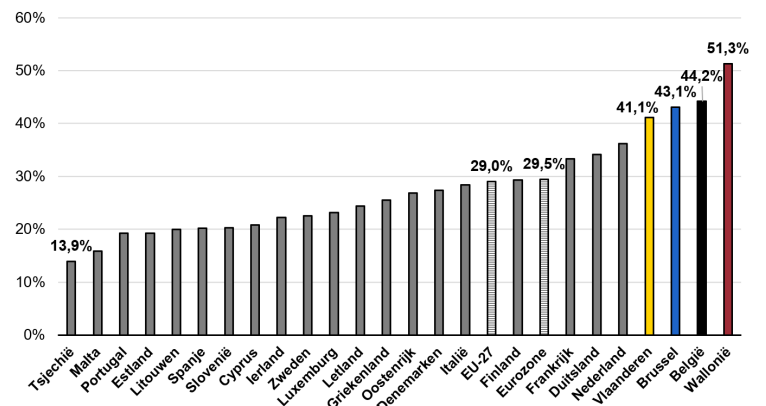- Daily & Weekly newsletters
- Buy & download The Bulletin
- Comment on our articles
Discrimination and poor policy hold back migrants on the Belgian labour market
A number of barriers are preventing migrants from effectively accessing the labour market, according to a study by Ghent University.
All three of Belgium’s regions scored worse in this regard compared to other European countries, it revealed.
Over half (51.3%) of non-EU foreigners between age 25 and 64 in Wallonia are “inactive,” meaning they are not working and are not looking for a job. In Flanders, 41.1% of non-EU citizens between age 25 and 64 are inactive and in Brussels the figure is 43.1%.
The university’s researchers hope their study will shed light on possible solutions.
“In this study, we summarised 10 scientific studies that are relevant for policy makers who want to improve migrants’ position in the Belgian labour market,” Stijn Baert, professor of labour economics, told The Bulletin.
“What we see is that overall there is an enormous problem: on average in Belgium, more than four in 10 migrants with a nationality outside of Europe are inactive, meaning they’re not employed and they're not searching for a job.”
The reasons for this are multiple, Baert explained: “They could be housewives or husbands, or they could be ill, or they could have searched for a job for a long time and then given up.”

Three key aspects explain migrants inactivity
There are three factors at play when it comes to migrants gaining access to the labour market: policy, employers and the inactive migrants themselves.
“It’s a very balanced story – while the three stakeholders often all blame each other, we recognise that there are problems on all sides,” said Baert.
On the employers’ side, rampant discrimination creates barriers to entry for migrants. “We did a lot of research with fictitious job applications and see age and ethnic discrimination in particular are a problem.”
On the employee side, discrimination in schools from an early age often results in poorer educational outcomes, with education being a major indicator of job market performance.
There are cultural differences at play, too: women with migrant backgrounds on average marry and have children younger than native Belgians, then choose to stay home full time. About six in 10 migrant women are inactive in the labour market.
That blame game – whether it’s employers citing Dutch or French language deficiencies, or migrants saying they don’t feel motivated to work hard when they’re only met with discrimination – often leaves out policy implications that have a substantial effect on the situation.
“In Belgium, our migration policies have been more targeted to migration for humanitarian reasons, as opposed to countries like the UK, Canada or Australia where they to a larger extent select profiles that are complementary with the labour market,” Baert explained.
“We don't have as much of a history of labour-based migration as these other countries do, which is an important success factor in migration policies.”
Negative perception of migration fuels a ‘downward spiral’
Migration is often perceived as negative by the people already living in the country, who recognise that newcomers with the same skill set pose competition. But if incoming workers have other skills, or can match their skills to bottleneck professions like nursing and education in Belgium, “they’re complementary and enhance each other’s productivity.”
“With respect to the perception of migration in Belgium and especially in Flanders, migration is not very popular – people believe it's not good for the country and so a substantial number of them vote for parties that capitalise on these sentiments,” Baert said.
“This creates a vicious spiral downwards: because we do not select or recruit the migrants who are complementary to our labour market, it results in less success, and therefore the perception that migration is harmful. We need to stop this race to the bottom.”
With these three factors at play, any solution requires that they work in tandem. “We can make migration a success story by recruiting migrants who are more complementary to our labour market, lowering discrimination so people get real chances, and implementing solid immigration policies,” Baert summarised.



















